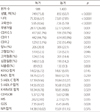Abstract
Background
Methods
Results
Conclusions
Figures and Tables
 | Fig. 1Age distribution of caregivers according to CDR. Blue box represents CDR 0.5, red one CDR 1 and green one CDR 2. |
 | Fig. 2The types of caregivers of total patients with dementia (A) and the types of caregivers depending on CDR (B). |
Table 1

CDR, Clinical Dementia Rating; KDSQ, Korean Dementia Screening Questionnaire; BADL, Barthel Activities of Daily Living; S-IADL, Seoul Instrumental Activities of Daily Living; -C, current performance; -P, potential performance; K-MMSE, Korean version Mini-Mental State Examination; HIS, Hachinski ischemic score; GDS, Geriatric Depression Scale; NPI, Neuropsychiatric Inventory.
Table 2

CDR, Clinical Dementia Rating; KDSQ, Korean Dementia Screening Questionnaire; BADL, Barthel Activities of Daily Living; S-IADL, Seoul Instrumental Activities of Daily Living; -C, current performance; -P, potential performance; K-MMSE, Korean version Mini-Mental State Examination; HIS, Hachinski Ischemic Score; GDS, Geriatric Depression Scale; NPI, Neuropsychiatric Inventory.




 PDF
PDF ePub
ePub Citation
Citation Print
Print


 XML Download
XML Download